Hakodate@Ωs
Hakodate ,Hakodate-shi is a city and port located in Oshima Subprefecture,
Hokkaido. As of July 2011,
the city has an estimated population of 280,000. The city is now the third
biggest in Hokkaido after
Sapporo and Asahikawa.
 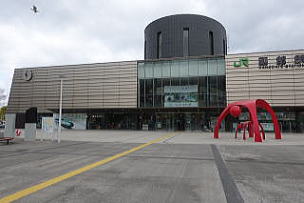
(L) Commemorative display of the 30th anniversary of Seikan Undersea Tunnel
opening
(R) JR Hakodate Terminal
The Hokkaido Shinkansen opened in March 2016. It currently runs to Shin-Hakodate-Hokuto
Station
through the Seikan under-see tunnel from Shin-Aomori Station. The new terminal
is 17 km away
from Hakodate Station. There are plans to extend the Hokkaido Shinkansen
north to Sapporo Station
by 2030. However, it is considered difficult to become a profitable railway
line.
 Tohoku-shinkansen, Hayabusa ( Super-express running between Tokyo and
Hakodate, via the under-sea tunnel ) Tohoku-shinkansen, Hayabusa ( Super-express running between Tokyo and
Hakodate, via the under-sea tunnel )
Mount Hakodate ΩR
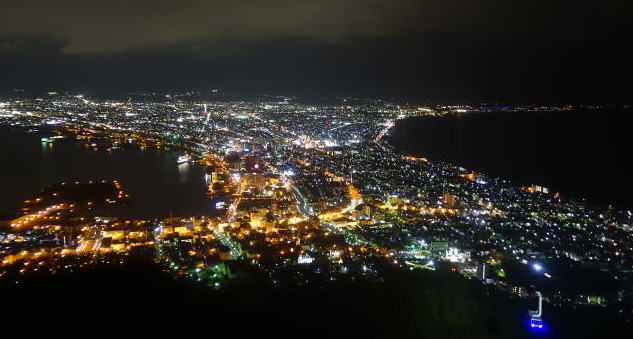 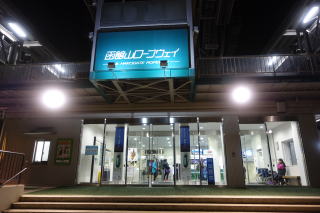
(L) Night View from Mount Hakodate (R) The entrance to Hakodate Ropeway
Mount Hakodate, Hakodate-yama is a mountain in Hakodate. The mountain is
renowned for its view of
the surrounding bay and city. The Michelin Green Guide: Japan gave the
experience 3/3 stars in a review,
placing it as equal to mountain views of Naples and Hong Kong. The peak
is accessible by hiking or
by bike, as well as by a regular cable car service. However, The restriction
to enter the mountain road
of Hakone-yama during the night time.
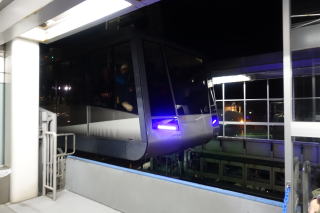 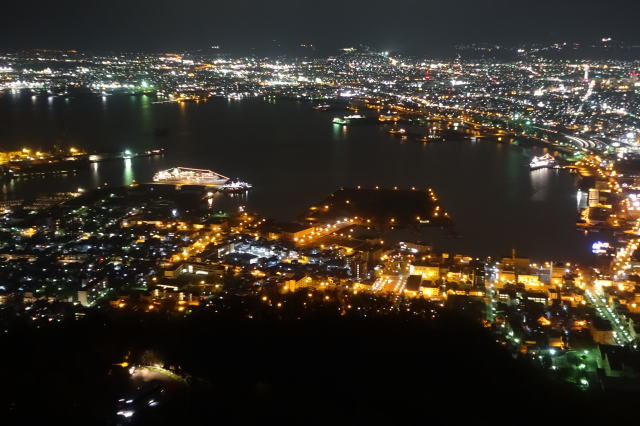
(L) Hakodate Ropeway (R) Night View of the city and port from Mount Hakodate
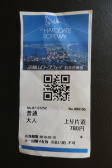 A ticket to Hakadate Ropeway A ticket to Hakadate Ropeway  The Hakodate Ropeway The Hakodate Ropeway
 @Hakodate Kokusai Hotel @Hakodate Kokusai Hotel
A key-point hotel for a bus service to the Hakodate Ropeway and to Hakodate
Airport It is a quite a challenge to pull your baggage
to walk there from the train station. It is much further than we thought.
It takes about ten minutes to the West Wing of the hotel.
It may be suggested to take a taxi to get there from Hakodate JR station,
if rain or snow is falling, or if the wind is very cold.
This is the key-point hotel for a bus service to the Hakodate Ropeway and
to Hakodate airport.
We took the two-meal course. However, there was no other guest in a dinning
room, which provides a nice view
of the harbor. Morning buffet was good. There are abundant of marine products
such as sweet shrimp, salmon
and squid. Of course, Western-style morning breakfast is available.
The hotel provides 118 guest rooms, of which; 39 rooms are for smokers
(33.1%). Non-smoking floor is located on the floors of
4F, 5F, 7F and 8F. A warning for smoking in the non-smoking guest room:
A charge of 20,000 yen or over, as a cleaning fee will be
applied if smoked. These data may be changed after a completion of the
constructionof East Wing. The space of a lobby and
restaurant restricts smoking. Unlike of North American and Northern European
countries, smoke-free-hotel is not popular in Hakadate.
Goryokaku άΕs
Goryokaku was designed in 1855 by Takeda Ayasaburo. His plan was based
on the work of the French
architect Vauban. It is shaped like a five-pointed star. This allowed for
greater numbers of gun
emplacements on its walls than a traditional Japanese fortress, and reduced
the number of blind spots
where a cannon could not fire. The fort was built by the Tokugawa shogunate
to protect against
a possible invasion by the Russian fleet. Goryokaku is famous as the site
of the last battle of the Boshin
War( 1869).
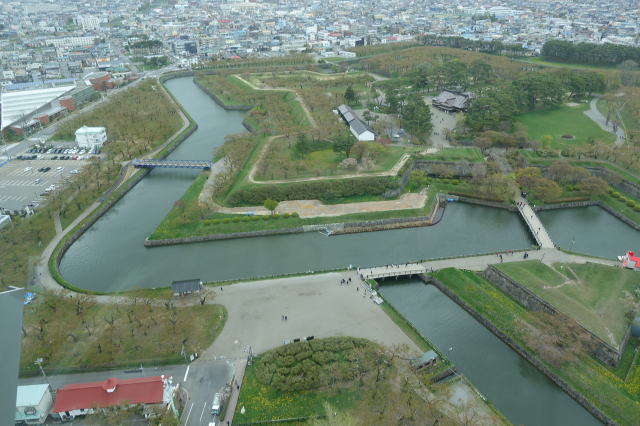 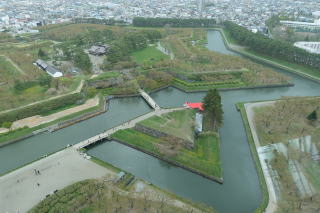
Goryokaku viewed from the tower
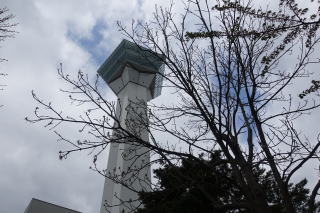 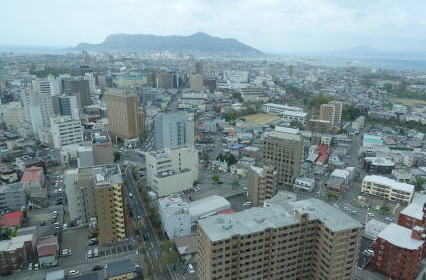
(L) Gyoukaku Tower seen from the ground
(R) A view of Hakodate-yama ( Mt. Hakodate ) and the city of Hakodate from
the Goryoukaku Tower
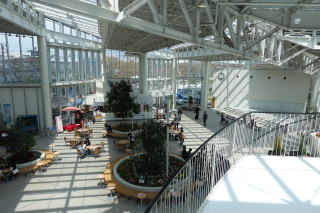 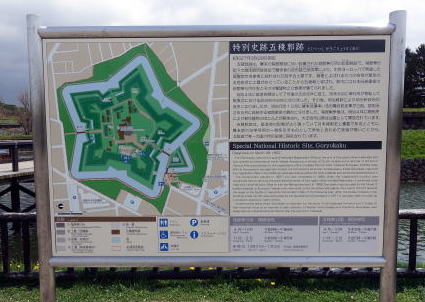
(L) A hall of Goryoukaku Tower (R) A guide plate of Goryoukaku
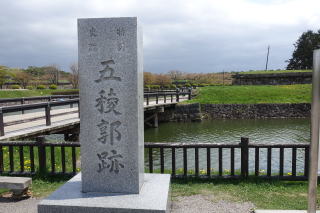 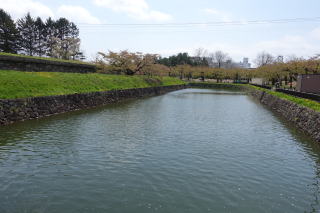 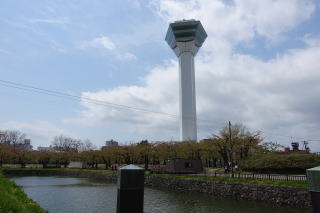
(L) A stone that shows the traces of Goryoukaku (M) The moat surrounding
the Goryukaku (R) The 98m high Goryoukaku Tower
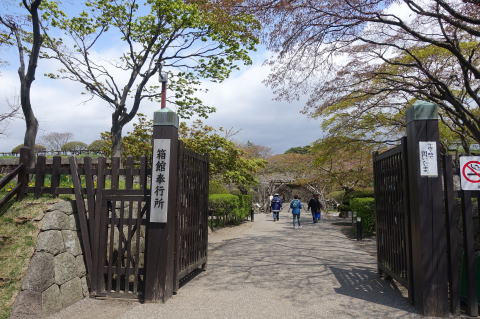 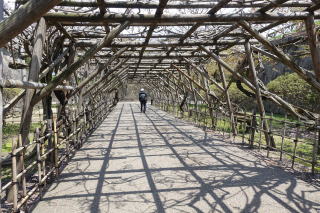
The entrance to Hakodate Magistrate's Office
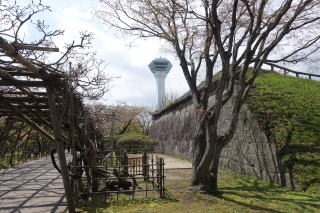 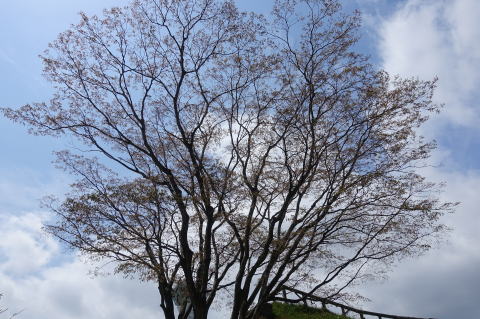
(L) Earth foundation and tower (R) A big tree stretches branches into the
blue sky
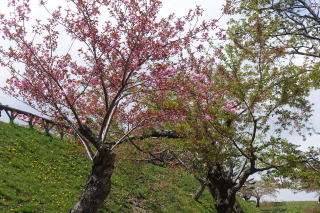 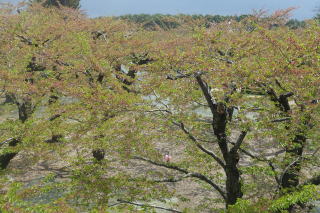 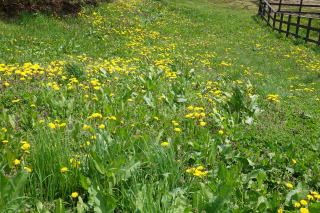
(L) Cherry trees in bloom (M) It passed through full bloom and it became
a leaf cherry trees.
(R) dandelion in Goryoukaku ground
 Goryokaku Tower Goryokaku Tower
Hakodate Magistrate's Office was established in Hakodate by the Edo Shogunnate
when the post of
Hakodate opened under the Japan-US Treaty of Peace and Amity. When the
construction of Goryokaku
was completed in 1864, the new Hakodate Magistrar's Office was inaugurated
and bacame the center
for shogunnate government' s northern policies and its diplomatic outpost
as well as the administrative
center of Ezo region and its development. In 2006, the reconstruction was started, and in 2010, the
building came back, by carefully detailed based on photographs, documents
and drawings, as well as
the results of excavation.
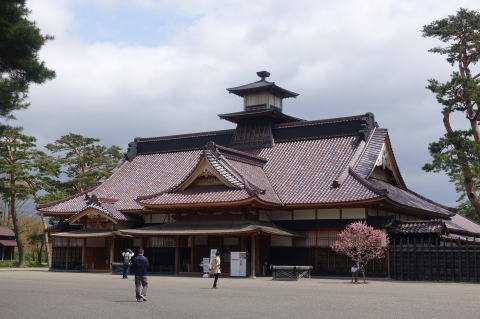 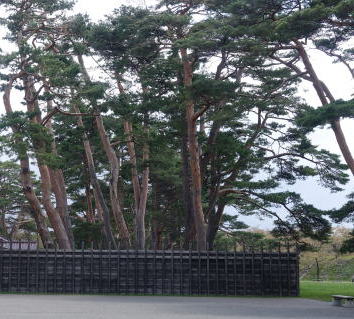
Restored Hakodate Magistrate's Office
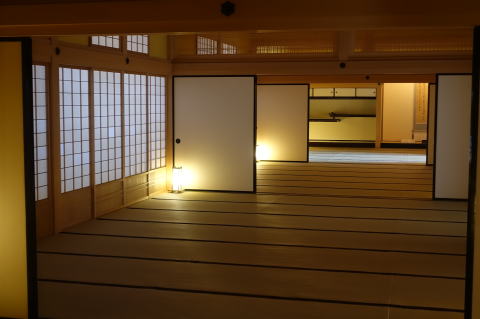 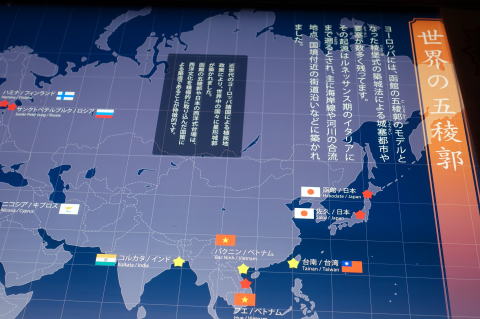
(L) The sweeping stateroom was recreated as authentically as possible to
convey the delicacy of Japanese architecture.
(R) Fortified cities if the World
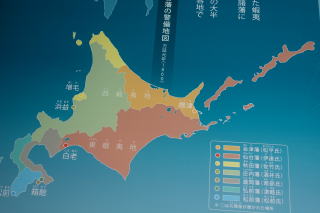 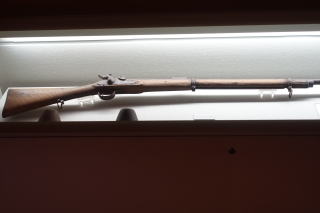 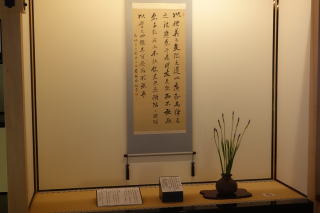
(L) East Ezo area was ruled by the Sendai clan.(M) A gun exhibited at Restored
Hakodate Magistrate's Office
(R) A hanging scroll in the Restored Hakodate Magistrate's Office
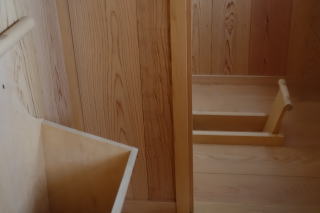 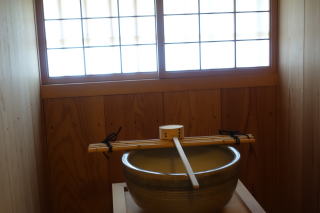 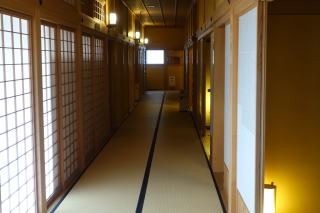
(L) A wooden toilet in the Restored Hakodate Magistrate's Office and a
washing basin (R) A corridor of the office
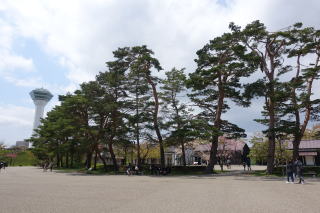 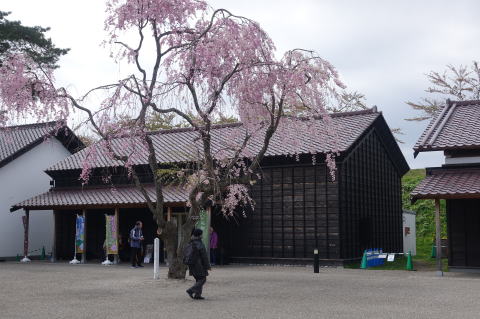
The site of Restored Hakodate Magistrate's Office and a weeping cherry
tree
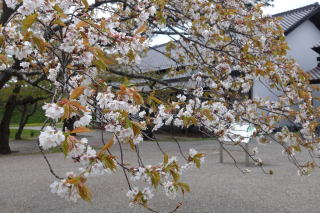 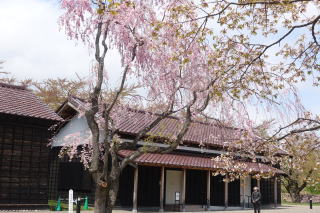 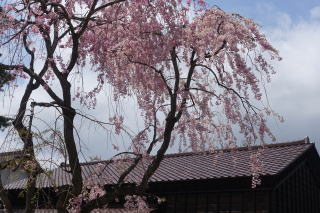
A wild crow and weeping cherry trees
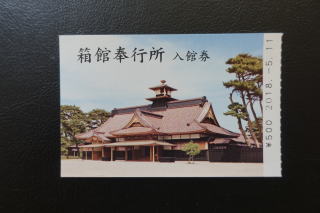  The Gyoukaku The Gyoukaku
A ticket to the Restored Hakodate Magistrate's Office
History 1941-1945: The city escaped most of the ravages of World War II.
Areas around Hakodate-yama were
fortified, and access restricted to the public. Many prisoners of war were
interned in Hakodate, and historians
record a total of 10 camps. The city was subjected to two allied bombing
raids on 14 and 15 July 1945. Around
400 homes were destroyed on the western side of Hakodate-yama and an Aomori-Hakodate
ferry was attacked
with 400 passengers killed.
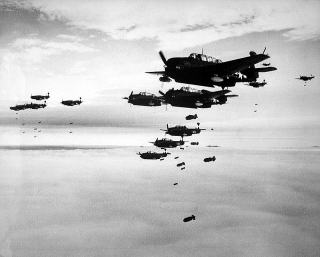
US Navy aircraft bombing Hakodate in July 1945
Asahikawa, Sapporo and Hakodate, Hokkaido
 Asahikawa station Asahikawa station  Asahiyama zoo Asahiyama zoo  Sapporo tour Sapporo tour  Railway trip: Sapporo to Hakodate Railway trip: Sapporo to Hakodate  Mount Hakodate and Goryokaku Mount Hakodate and Goryokaku
 Smoke-free hotels in Japan Smoke-free hotels in Japan
 Smoke-free hotels in Tokyo Smoke-free hotels in Tokyo
 Smoke-free hotels in Kyoto and Nara Smoke-free hotels in Kyoto and Nara
 Domestic travel in Japan Domestic travel in Japan
 Stress-free travel in Tokyo Metropolitan and Kyoto area Stress-free travel in Tokyo Metropolitan and Kyoto area
 How to protect you from toxic tobacco smoke when you use a restaurant
in Japan. How to protect you from toxic tobacco smoke when you use a restaurant
in Japan.
 Travel sketch in Japan and the world in respect to smoking regulations Travel sketch in Japan and the world in respect to smoking regulations
 ΩwAΩRAάΕs ΩwAΩRAάΕs
 ·M@γwm {{ ·M@γwm {{
This Web site is link-free.
This information was provided by the Smokefree Hotel and Travel.
The article was writtenand photography was taken in May 2018, by Junhaku
Miyamoto, M.D., PhD.
Copyright (C) 2018 Junhaku Miyamoto, PhD. All right is reserved.
 Regional weather forecast throughout Japan Regional weather forecast throughout Japan
|